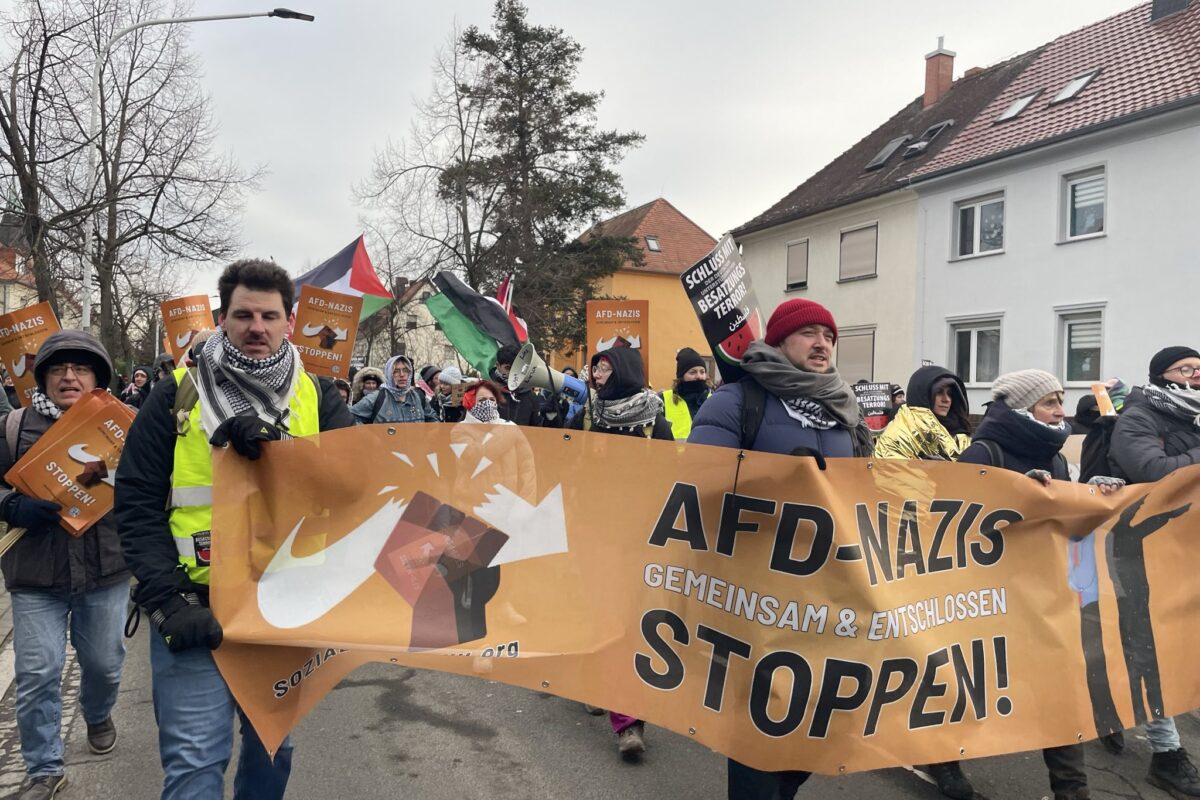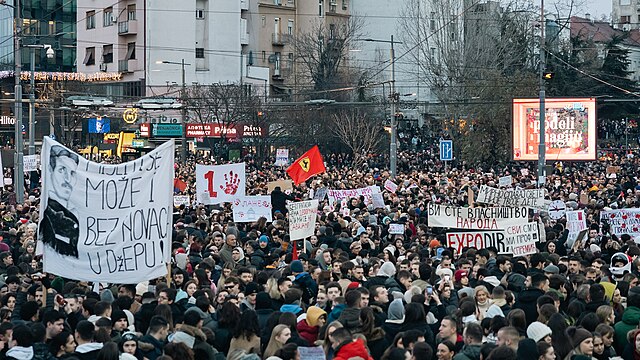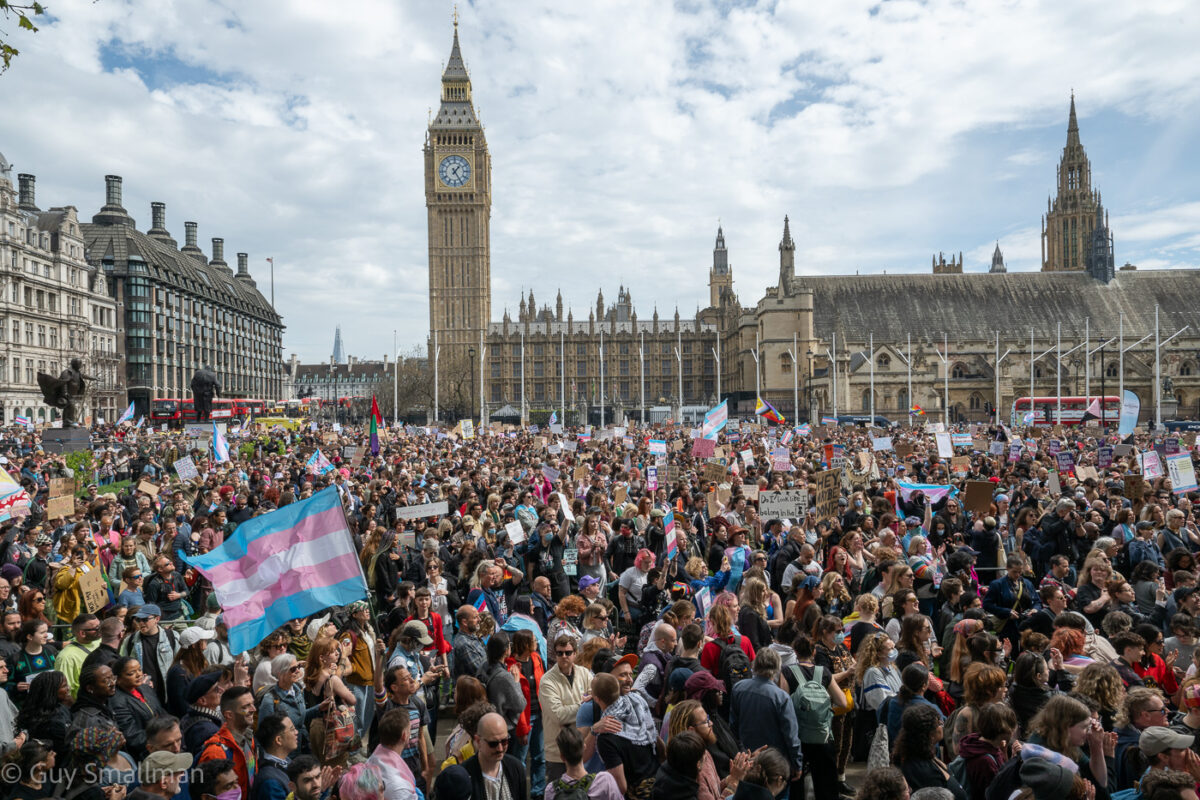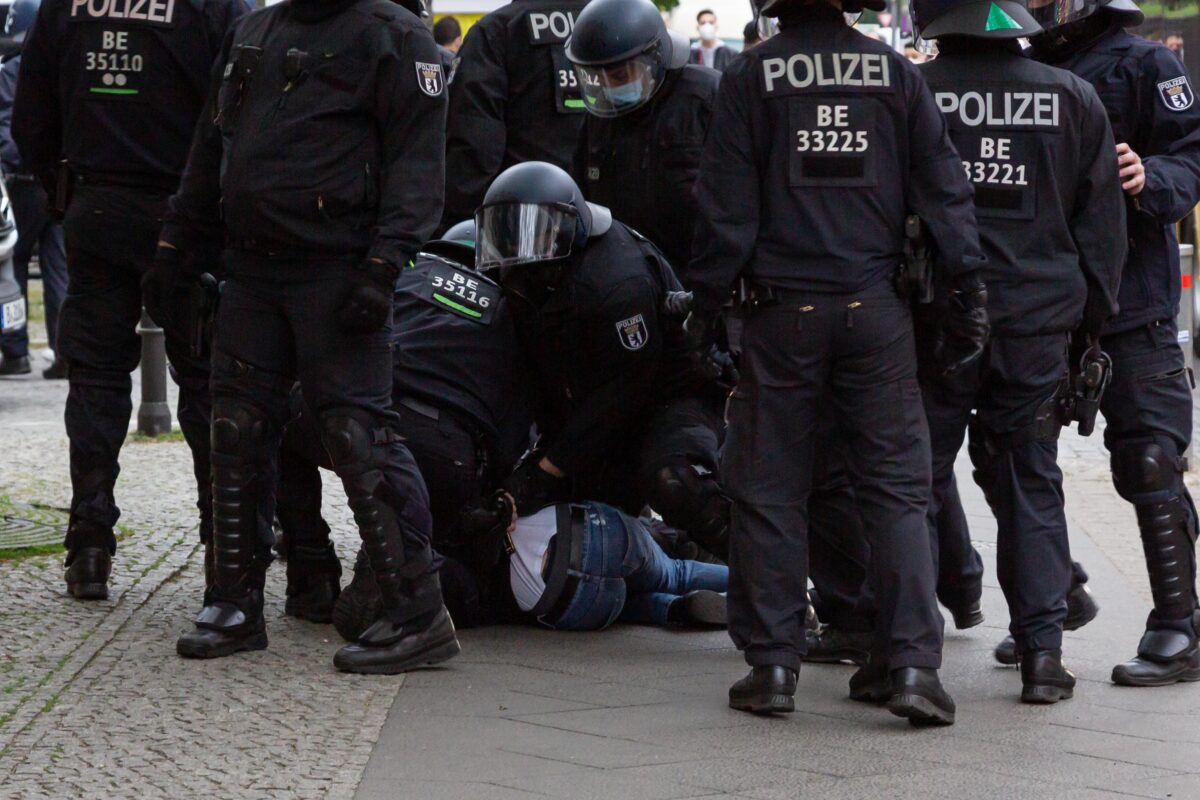On 11 January, 15,000 people travelled from across Germany in at least 200 buses and more sold-out trains to protest the conference of the fascist Alternative for Germany (AfD), which is polling second in the run-up to national elections next month.
After its conference in Essen last year was met with 70,000 anti-fascist demonstrators, the AfD this year moved its meeting to the regional town of Riesa, in Saxony, where the party received 38 percent of the vote in the 2024 state elections.
Fascists lead the AfD. Its unofficial “führer”, Björn Höcke, who has been convicted for using Nazi slogans at rallies, has long won the fight for control over the party. Research last year by Bavarian Broadcasting found that the AfD employs more than 100 hardcore Nazis in the German parliament, including activists and organisers of street fighting groups.
The AfD dreams of a German ethnostate, to be realised through mass deportations of non-ethnic Germans. This plan to “return millions of foreigners to their homeland is no secret”, admitted AfD Brandenburg chair René Springer last year. “It is a promise.”
Indeed, Höcke boasts of projecting a “politics of well-tempered cruelty”.
Two anti-fascist campaigns organised the blockades in Riesa under the slogan “Prevent the AfD conference!” Aufstehen gegen Rassismus (Stand Up to Racism) is a historic campaign formally supported by the Social Democrats, Greens and trade unions; Widersetzen (Resist) was formed last year to organise the blockades of the AfD conference in Essen.
An important development this year was the formation of Studis gegen Rechts (Students Against the Right), which recently called mass student general meetings to oppose the AfD and mobilise for Riesa. Waiting for one of the dozens of buses from Berlin organised by the students, Phil Butland, a member of Socialism from Below and a contributor to The Left Berlin, said, “There were meetings at three Berlin universities where there were 4,000 at them [in total]. They were just student union meetings, but they were the biggest student union meetings in years.”
Similar meetings across the country attracted thousands more.
“Most, if not all, also passed a motion on Palestine at the same meeting”, Butland said. “I think people were mainly there for the AfD thing, but it shows how much things have shifted at German universities that people who weren’t there for Palestine voted for a pro-Palestine motion.”
Different parts of the demonstration were separated into “fingers” – smaller groups which concentrate on different areas, so as to occupy the police and let other fingers surge through. This is based on the “five-finger strategy” developed around the G8 protests in Heiligendamm, Eastern Germany, in 2007. Once its fleet of buses arrived, the Berlin “finger” was stopped by the police for over an hour.
As dawn broke, it finally began its march toward Riesa. A young, first-time protester said that he knew he had to go when he saw the blockades advertised. “[The AfD] stands against everything that I stand for … I’m scared of fascists, and even more scared of fascists that are successful with what they do”.
Amid economic stagnation, politics in Germany—and across Europe—have shifted sharply to the right. Racism has been used to paint refugees and immigrants, rather than bosses and landlords, as responsible for rising unemployment and rents.
It is not just the far right that is fuelling this shift. In 2023, German Chancellor Olaf Scholz argued for Germany to “finally deport on a mass scale”, and since his ruling coalition collapsed, all major parties apart from the crisis-ridden left-wing Die Linke (The Left) have begun a racist election campaign of which the AfD could be the primary beneficiaries. Prioritising campaigning for February’s snap election, however, Die Linke had a notably small presence in Riesa.
On the other hand, the trade unions were very visible. Germany’s second-largest union, ver.di, refunded half the cost of its members’ bus tickets and publicly promoted the blockades. There was even a small group called Tesla Auto Workers Against Fascism.
Tesla CEO Elon Musk has been promoting the AfD, but while he shared a livestream from inside the conference hall to his X account, outside, the Tesla workers who generate his wealth staffed the barricades.
After a couple of hours, sub-zero temperatures began to wear down the blockaders, but photos of a near-completely empty conference hall generated a triumphant mood. Unfortunately, this did not last long. Blockaders were cleared by police, who attacked with truncheons, pepper spray and dogs, Berlin’s Daily Newspaper reported. Nam Duy Nguyen, a Die Linke parliamentary observer, was beaten unconscious.
Protesters then marched through the town, carrying signs that read, “Björn Höcke is a Nazi” and “Stop the AfD-Nazis!” Ahmed Shah, a member of Socialism from Below and a longstanding anti-fascist campaigner said, “If Nazis march, and you don’t do anything, they grow […] So you have to act.”
With the fascist Freedom Party forming a government in neighbouring Austria and Donald Trump stepping into the White House, the far right is on the march. Days after its conference, the emboldened AfD distributed election flyers in the form of deportation tickets.
The blockades in Riesa were important, but more actions will be needed.
This article first appeared in Red Flag




